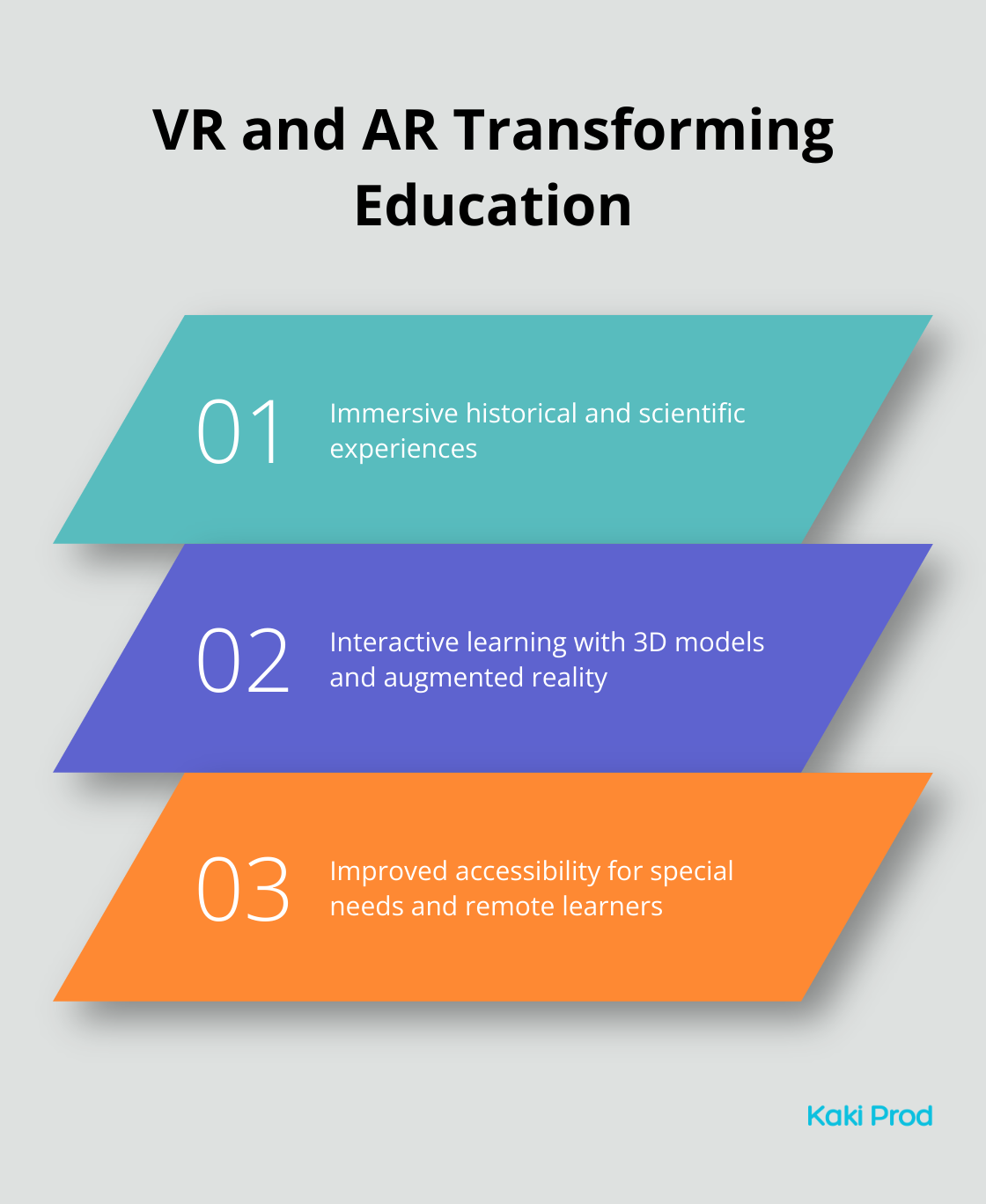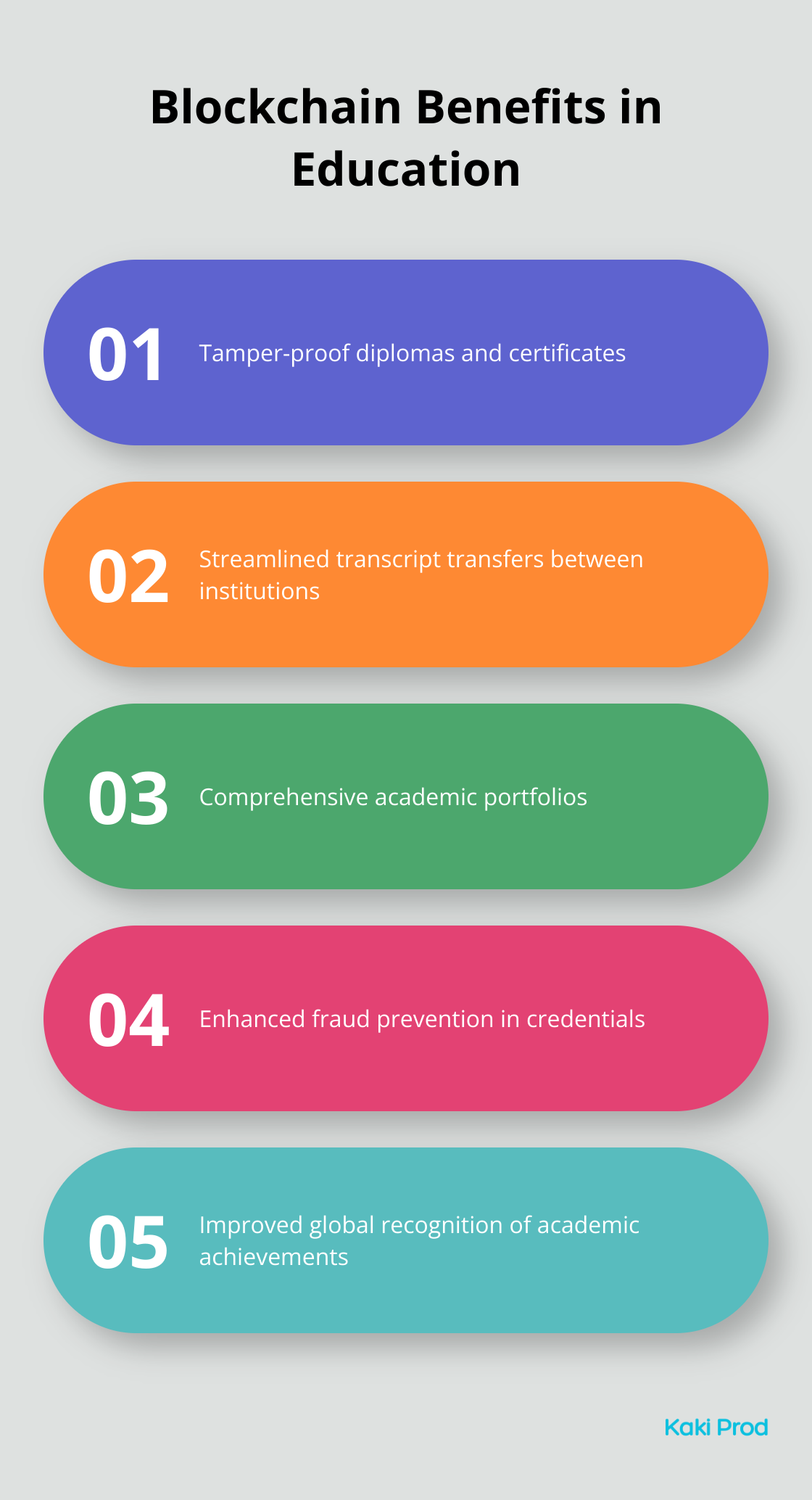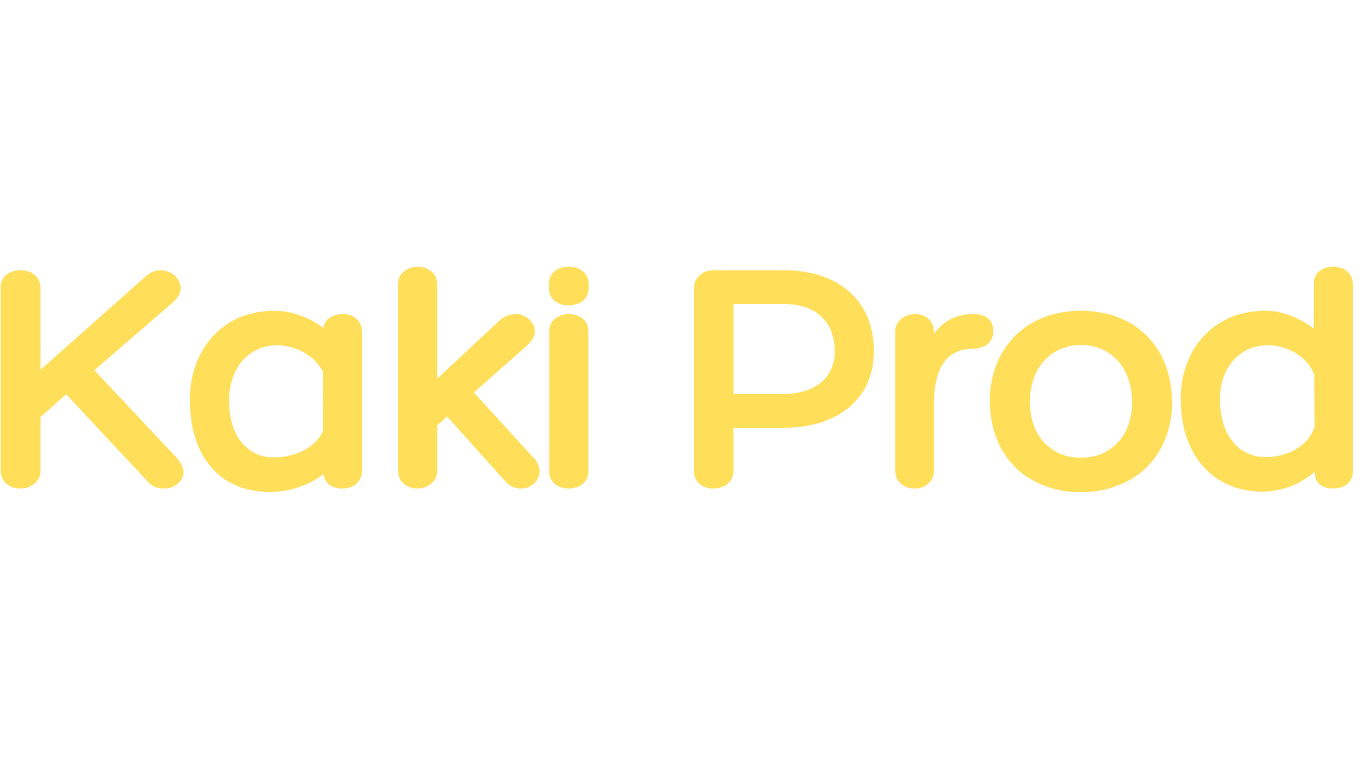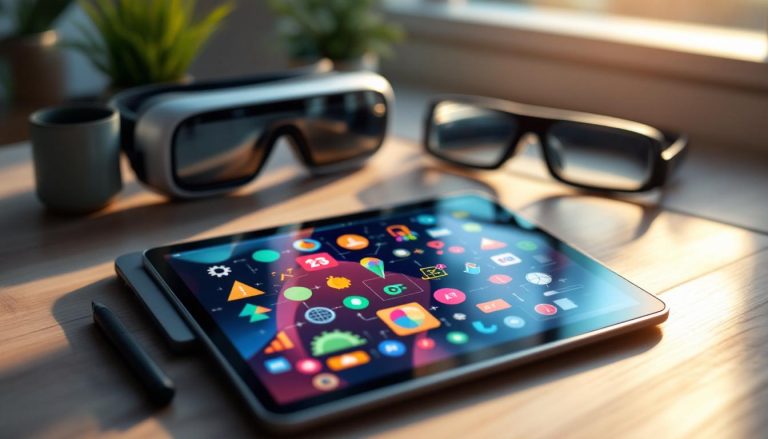At Kaki Prod, we’re amped about diving into how emerging tech is flipping the education script. These new gadgets? They’re mixing up how students soak up knowledge and how teachers do their teaching gig.
We’ve got AI doing its thing with personalized learning, tossing tailored lessons at students, while VR is dropping them into mind-melting immersive experiences. The classroom of tomorrow is happening now, folks. This post? It’s going to lay out how these shiny toys aren’t just gizmos—they’re revolutionizing education and gearing up students for what’s next.
How AI Transforms Education
AI is shaking up education like a snow globe – everything’s swirling and it’s hard to put the pieces back where they were (not that you’d want to). This isn’t some sci-fi daydream; it’s the real deal hitting classrooms everywhere.
Personalized Learning Paths
AI-powered systems create tailored learning experiences for students. These systems-analyzing every quiz you ace or bomb, how you learn (or don’t), and how fast you finish-get busy crafting the perfect plan just for you. It’s kind of like having a personal trainer, but for your brain. You’re challenged just enough, meaning you actually pay attention, and bam…you learn more.
Smart Grading Systems
Think of automated grading systems as the teacher’s secret weapon. Stuff like Gradescope cranks through essays, giving feedback quicker than you can say “homework’s done.” Thousands of papers graded in minutes? Yep, and all without the usual human “did I grade this too hard” drama. Teachers get to dodge the grading grind and focus on helping those who really need a hand.
24/7 AI Tutors
Intelligent tutoring systems provide that late-night study buddy you wish you had-always there, never judging. They sniff out where you’ve got knowledge holes and help plug them (hooray for targeted learning!). Meanwhile, teachers get the inside scoop on how students are doing: who’s thriving, who’s slacking, and who’s one pop quiz away from a breakdown.
AI-Generated Educational Content
AI tools now create made-to-order educational materials that get right to the point. Like Curipod, which helps teachers whip up interactive lessons faster than you can say “pop quiz.” Students dive into all sorts of topics that make learning not just a task, but an experience.
Challenges and Considerations
Of course, sticking AI into schools isn’t just plug-and-play. You’ve got data privacy jibber-jabber, this whole digital divide thing, and teachers scratching their heads over how to make these digital things work for them. Still, despite the hurdles, the lure of personalized, efficient, and accessible education keeps the AI train chugging forward, full steam ahead on innovation.
Peeking over the horizon, AI’s not done yet. Look out for Virtual and Augmented Reality to tag in and make classes more like a theme park ride-and a whole lot less like sitting at a desk. Dreams from science fiction turning real…and it’s going to be wild.

VR and AR Transform Classrooms
AR and VR-once the playgrounds of gamers and tech enthusiasts-are now rewriting the rules of education by shifting learning from passive to active. We’re talking about students diving into content and putting their hands (virtually, at least) on lessons in ways our chalkboard-wielding ancestors couldn’t have imagined. These tools? They’re not just new gadgets-they’re making subjects jump off the page.
Immersive Historical and Scientific Experiences
Let’s hop into the TARDIS of learning … with VR taking students to ancient worlds or the innards of the human body. Companies are rolling out headsets and ready-to-go lesson plans that teleport kids to historical battles or the beating heart of biology. It’s a whole new frontier. Research? Yep, it’s got the receipts-showing how AR and VR in our schools give kids a serious leg up on their learning curve.
Interactive Learning with AR
And AR? It’s like turning the world into your Google. Apps are taking basic stuff and morphing them into elaborate 3D models that students can poke, prod, and practically climb inside. Picture this: a foam cube suddenly morphs into a virtual frog ready for the scalpel or Earth’s crust opening up before your eyes. Some apps? They’re going full Jurassic Park, letting dinosaurs wander around the classroom like your old geometry teacher never could.
Accessibility for All Learners
VR and AR are more than just about the bells and whistles-they’re about inclusion. Students with special needs? Remote learners? They’re no longer on the sidelines. The University of Virginia, for instance, is using VR to help autistic students nail those tricky social situations. And for those learning miles away, virtual lectures and projects are the new normal, turning distance into just a number.
Challenges and Advancements
But here’s the rub: it’s not all smooth sailing. Top-notch VR-style magic carries a hefty sticker price, and let’s not forget the queasy motion sickness some users battle. Yet, with costs nose-diving quicker than the latest TikTok trend-and headsets like Meta’s Quest 3 pitching in at $499-schools are starting to buy in. AR, on the other hand, has sidestepped these hurdles because, hey, students already have the tech-their phones-in their pockets.
VR and AR are not just the future-they’re the now. Schools brave enough to dive in headfirst are setting up their students for a tech-fueled world. As these technologies metamorphose education, another quiet revolution’s on the move-blockchain tech. It’s not about the hype-it’s changing how we keep and manage educational credentials, turning record-keeping into a digital masterpiece.

How Blockchain Secures Academic Credentials
Blockchain digital credentials are the shiny new toys in the education sandbox-offering tamper-proof, instantly verifiable certificates, all thanks to blockchain tech. It’s about trust, efficiency, and-ding, ding, ding-putting students in the driver’s seat of their own achievements.
Tamper-Proof Diplomas and Certificates
So, schools are getting with the program, issuing diplomas and certificates that scream blockchain security. MIT was an early adopter back in 2017, blazing the trail as one of the first to hand out recipient-owned virtual credentials. Think: fortresses against forgery or alteration. When an employer manhandles your resume, they get the truth-the whole truth-no waiting on the phone with the registrar or playing snail mail tag.
Streamlined Transcript Transfers
The magic of blockchain for education? It’s a game-changer for transferring academic credits between institutions-totally transparent, utterly tamper-proof. Thanks to players like Sony Global Education and IBM, your student records zip securely and swiftly to their destination. Translation: less paper-pushing, lower costs, and a fast-forward button on admissions for school-switchers and grad program hopefuls.
Comprehensive Academic Portfolios
Picture this: a secure digital portfolio that houses every academic credential you’ve racked up-from that kindergarten art award to your latest professional cert. Blockchain makes it happen. Companies are rolling out platforms, letting learners stash-and selectively share-their entire educational arc. It’s convenience on a silver platter, empowering students to show who sees what, when they see it.
Fraud Prevention
Enter blockchain technology-credential fraud’s worst nightmare. Each academic milestone gets logged as a verifiable, unique transaction on the blockchain. The result? Good luck to anyone trying to fake qualifications or institutions attempting to pass off bogus degrees. It’s real-deal authenticity, driving fair and transparent hiring and admissions processes.
Global Recognition of Credentials
And here’s the kicker-blockchain boosts the global recognition of academic credentials. As more institutions jump on this bandwagon, cross-border recognition gets a whole lot easier. This perk is a golden ticket for international students or professionals eyeing opportunities abroad. Thanks to blockchain’s decentralized flair, credentials stay accessible and verifiable, no matter where you are or what happens with institutional systems.

Final Thoughts
So, we’re talking emerging tech in education, reshaping how we learn. You’ve got AI, VR, AR, and blockchain – yep, the whole alphabet soup – bringing a new world of potential to the classroom. Personalized, immersive, efficient … it’s like giving education some serious rocket fuel. These tools? They smash barriers, tune into individual quirks, and drag students straight into interactive worlds. Abstract concepts? They don’t stand a chance.
The future? Bright. But hang on, there are bumps – data privacy, digital divide, anyone? Yet, as tech costs dive and the gadgets mature, we’re looking at broader adoption. Picture this: tomorrow’s classrooms are a cocktail of brick-and-mortar and virtual spaces, with AI sidekicks-er, assistants-backing both teachers and students.
And then, there’s Kaki Prod. We’re here to help you steer through this evolving terrain. Our EverydayNext platform is packed with resources and insights to supercharge your journey in this wired world. Tech’s not just a player in education; it’s the MVP, unlocking human potential and crafting a more inclusive learning experience for everyone.

